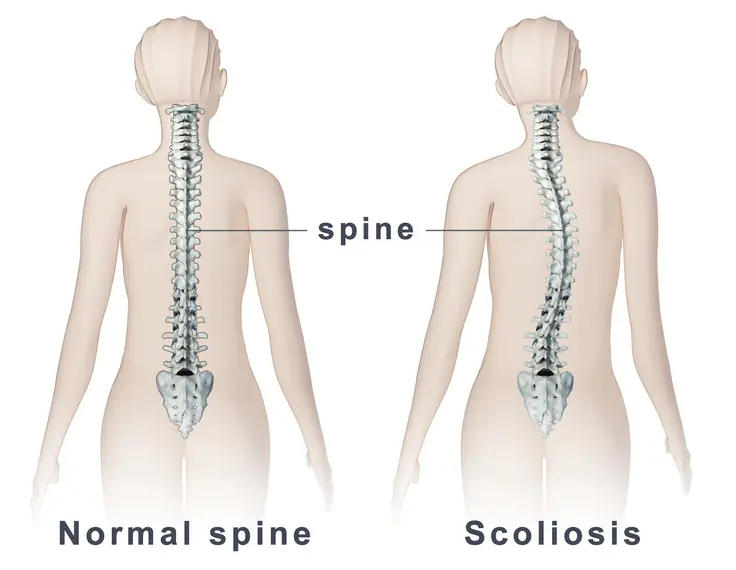Scoliosis is a spinal deformity that occurs in infants as well as adults. Severe scoliosis causes chronic pain and disability in the affected region of the spine. Go through this article to learn more about scoliosis treatment in Mumbai.

There are three types of scoliosis: idiopathic, congenital, and neuromuscular scoliosis.
Idiopathic scoliosis
Idiopathic scoliosis is the largest category with indefinite causes. It’s a common type of scoliosis that develops during the adolescent stage.
Idiopathic disease is divided into the following age groups:
Congenital scoliosis is caused by a birth defect in one or more vertebrae in any part of the spine.
A strange curve in the spine is what causes the vertebrae to be out of place. Because these abnormalities are present from birth and grow with age, they are usually discovered in their early stages.
Neuromuscular scoliosis is the second most common kind of scoliosis that is caused by problems with the nerves or muscles.
This scoliosis is related to cerebral palsy, muscular dystrophy, spinal muscular atrophy, trauma (shock), the spinal cord, and spina bifida.
Neuromuscular scoliosis gets worse faster than idiopathic scoliosis and is usually fixed through surgery.
There are several symptoms that indicate scoliosis, so here are some of them:
The above-mentioned symptoms are most likely to occur if you have scoliosis.
The cause of scoliosis is still unknown because the doctor doesn’t have a reason for it, but it’s believed that it comes from genetic factors.
Here are a few causes of scoliosis identified by doctors:
Muscular dystrophy
It refers to a group of genetic disorders that lead to weakness of the muscles.
A bunch of neuromuscular disorders affect the mobility, stability, and overall function of the nervous system.
When an infant is born with lateral curvature of the spine (Spina Bifida), which is nothing but a birth defect.
Trauma or any sudden shock occurs during any accident and gives rise to spinal damage or injury.
Infections such as bacterial or fungal infections in any part of the body that carry blood through the spine can cause scoliosis.
Before the diagnosis process, your doctor is most likely to go over your medical history. Some physical (neurological) exams are done to check your muscle weakness, numbness, and abnormal reflexes.
After this, some imaging tests are done for a detailed analysis of the affected region, which includes
X-rays make pictures that help doctors figure out what is wrong with the vertebrae in the spine.
The electromagnetic rays provide an outline of the joints, which can indicate malformations, fractures, infections, and so on.
CT scan produces a precise image of internal anatomy such as rupture bones, lateral curvature in the spine, etc.
A dye is injected into the veins to reveal clear images of internal organs.
It provides a higher-quality version of images compared to X-rays.
In general, your doctor might suggest an MRI if you are feeling numb, weak, uncomfortable, or have any strange reflexes.
Magnetic resonance imaging enables us to get detailed information about scoliosis.
With the help of a magnetic field and computer technology, images of the body’s structures are made in 3D for this test.
Depending on the scoliosis condition, treatment varies. If children have mild curves, no specific treatment is required, but if it gets worse, treatment is necessary.
In the case of moderate-to-severe curves, treatments are essential to avoid further complications.
Treatments are available in non-surgical and surgical ways.
Non-surgical procedure includes

Note : Braces cannot cure or reverse the scoliosis condition
Chiropractic treatment
The surgical procedure includes the following:
Spinal fusion
The complications of spinal surgery are:
We at One Spine Clinic offer best-in-class spine surgery and treatments in Mumbai. Our spine specialists have been performing scoliosis surgery for several years with a high success rate. Our team makes sure you receive the best scoliosis treatment in Mumbai.